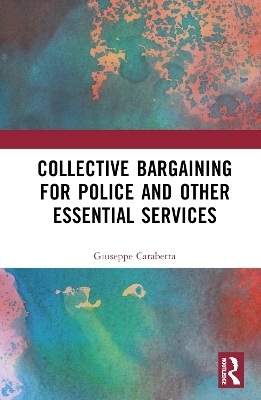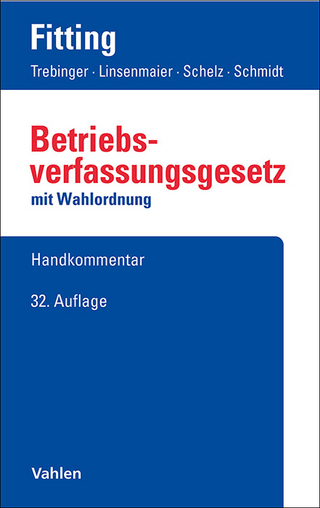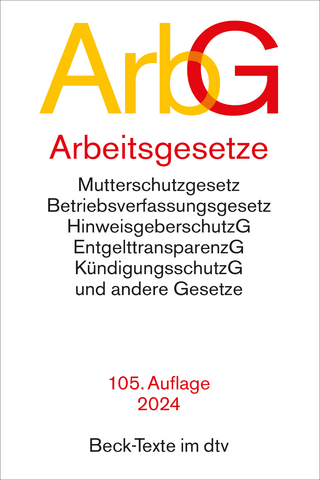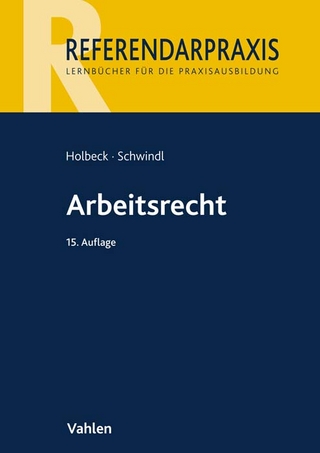
Collective Bargaining for Police and Other Essential Services
Routledge (Verlag)
978-1-032-32406-7 (ISBN)
This book examines how collective bargaining disputes are resolved among police and essential service employees.
In Australia, as in other common law countries, police and other highly essential employees such as fire-fighters and ambulance officers have long had access to a form of binding arbitration to settle collective bargaining disputes. The traditional arbitration-based system in Australia has, however, been replaced in recent decades with a marked-based collective bargaining system. The current (Fair Work) system restricts access to arbitration, favouring collective bargaining based on the parties’ prerogative to make their own agreements, and supported by a limited right to industrial action — including strikes — during bargaining. Yet, police officers, particularly, are subject to considerable restraints on any entitlement to participate in industrial action. The problem is that with limited access to arbitration, and an especially limited right to industrial action, intractable disputes may continue indefinitely, without any impasse-breaking process to prevent the flow-on harms of long-running police disputes. This raises the essential question underpinning this study: what form of dispute resolution system is appropriate to protect both the legitimate industrial interests of police officers, and the community’s interest in the uninterrupted provision of essential policing services?
The author in his extensive field-work research and his study of international case studies has developed a useful model for mandatory interest arbitration among police and other essential services personnel. The lessons and recommendations in the book offer insights for essential services labour law in Australia and overseas.
Giuseppe Carabetta is an Associate Professor of workplace and business law at the University of Technology, Sydney, Australia.
ABSTRACT
AUTHOR’S NOTE ON PREVIOUS PUBLICATIONS
ACKNOWLEDGEMENTS
CHAPTER ONE: INTRODUCTION
I THE OBJECTS OF THIS WORK
II EFFECTIVE DISPUTE AVOIDANCE AND RESOLUTION FOR
A CRITICAL ESSENTIAL SERVICE
III THE ROLE OF INTERNATIONAL LABOUR STANDARDS
IV METHODOLOGY
V A FRAMEWORK FOR EVALUATION
VI THE ORGANISATION OF THE STUDY AND ITS ARGUMENT
A The Study’s Argument
CHAPTER TWO: INTERNATIONAL LABOUR STANDARDS
I INTRODUCTION
II PUBLIC SECTOR COLLECTIVE BARGAINING AND THE FUNDAMENTAL ILO FREEDOM
OF ASSOCIATION CONVENTIONS
III THE RATIONALE BEHIND COLLECTIVE BARGAINING
A Introduction
B Levelling the Playing Field
C Promotion of Industrial Peace
IV INTERNATIONAL STANDARDS CONCERNING COLLECTIVE BARGAINING
A Introduction
B Principles Concerning Public Sector Bargaining
C Special Characteristics of Public Service
V DISPUTE RESOLUTION AND THIRD PARTY INTERVENTION
A Voluntary Nature of Bodies for the Resolution of Collective Bargaining
Disputes
B Independence and Impartiality of Procedures and Confidence of Parties
C The Role of Arbitration in the Resolution of Bargaining Disputes
VI STRIKES AND THE WITHDRAWAL OF SERVICES
A The Right to Strike in the Public Sector
B The Right to Strike and Essential Public Services
CONCLUSION
CHAPTER THREE: THE AUSTRALIAN POLICE LABOUR RELATIONS FRAMEWORK
I INTRODUCTION
II THE REGULATION OF POLICE EMPLOYMENT IN AUSTRALIA
III THE CONCILIATION AND ARBITRATION SYSTEM
IV RE-SHAPING THE LABOUR RELATIONS SYSTEM: THE SHIFT TO ENTERPRISE
BARGAINING
A Limitations on Compulsory Arbitration
B Limitations on Industrial Action
C Matters Excluded from Bargaining
V CONCLUSION
CHAPTER FOUR: PUBLIC SECTOR DISPUTE RESOLUTION: THE MECHANISMS
I INTRODUCTION
II BACKGROUND: BARGAINING IN A PUBLIC SECTOR CONTEXT
III DISPUTE RESOLUTION IN THE PUBLIC SECTOR: THE MECHANISMS
A Conciliation and Mediation
B Arbitration
IV SUMMARY AND CONCLUSION
CHAPTER FIVE: THE REGULATION OF INDUSTRIAL ACTION
I INTRODUCTION
II CONCEPTS OF ESSENTIALITY
III ESSENTIAL SERVICES STRIKE MODELS
A The ‘No-Strike’ Model
B The ‘Unfettered-strike’ Model
C The ‘Controlled-Strike’ (or ‘Designation’) Model
IV THE DESIGNATION OF ESSENTIAL SERVICES UNDER A CONTROLLED-STRIKE
MODEL
V CONCLUSION
CHAPTER SIX: CASE STUDY 1: INTEREST ARBITRATION MODELS
IN CANADA
I INTRODUCTION
II STATUTORY FRAMEWORK
A Ontario
B British Columbia
III APPLICATION OF ARBITRAL CRITERIA AND COLLECTIVE BARGAINING
CONTEXT
IV DISCUSSION
V ALTERNATIVE APPROACHES
VI CONCLUSION
CHAPTER SEVEN: CASE STUDY 2: MEDIATION-ARBITRATION IN THE NEW ZEALAND POLICE
I INTRODUCTION
II THE NEW ZEALAND POLICE NEGOTIATION SYSTEM
A Statutory Foundation and Final-Offer Arbitration
B The Police Negotiation Framework
III A BLENDED MEDIATION-ARBITRATION MODEL
IV ALTERNATIVE PROPOSALS
V DISCUSSION AND ASSESSMENT
VI CONCLUSION
CHAPTER EIGHT: LESSONS AND RECOMMENDATIONS FOR
REFORM
I INTRODUCTION
II LESSONS AND RECOMMENDATIONS
A Adoption of a Mediation-Arbitration Model of Interest Arbitration
B Final-Offer Arbitration as a Dispute Resolution Option
C A Tripartite Arbitration Structure
D Arbitral Criteria
E Industrial Action
F An In-built Review Process
CHAPTER NINE: MOVING FORWARD …
BIBLIOGRAPHY
| Erscheinungsdatum | 11.09.2024 |
|---|---|
| Verlagsort | London |
| Sprache | englisch |
| Maße | 156 x 234 mm |
| Gewicht | 553 g |
| Themenwelt | Recht / Steuern ► Allgemeines / Lexika |
| Recht / Steuern ► Arbeits- / Sozialrecht ► Arbeitsrecht | |
| Recht / Steuern ► EU / Internationales Recht | |
| ISBN-10 | 1-032-32406-6 / 1032324066 |
| ISBN-13 | 978-1-032-32406-7 / 9781032324067 |
| Zustand | Neuware |
| Informationen gemäß Produktsicherheitsverordnung (GPSR) | |
| Haben Sie eine Frage zum Produkt? |
aus dem Bereich


